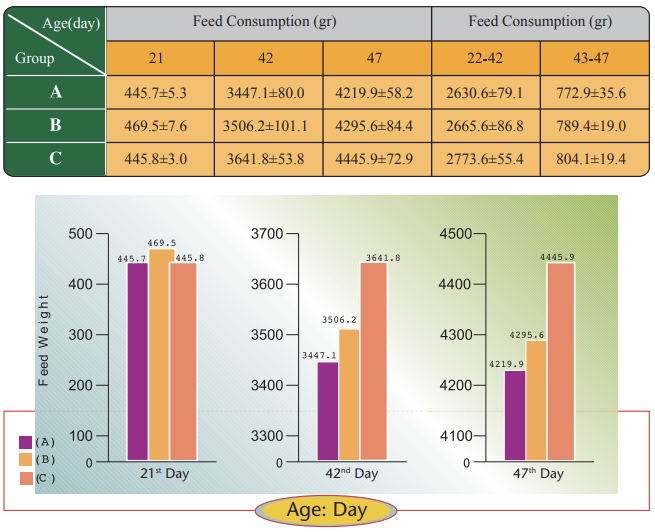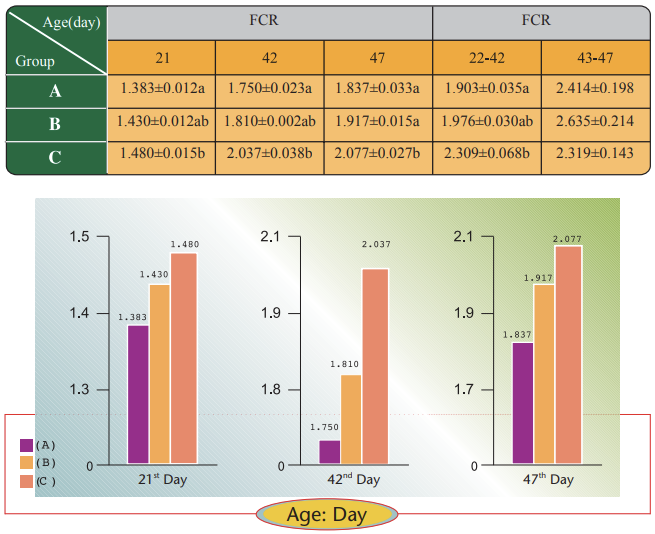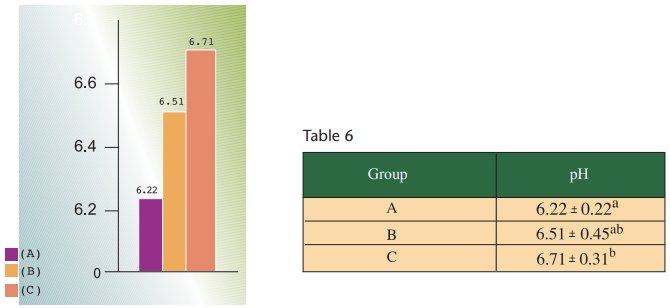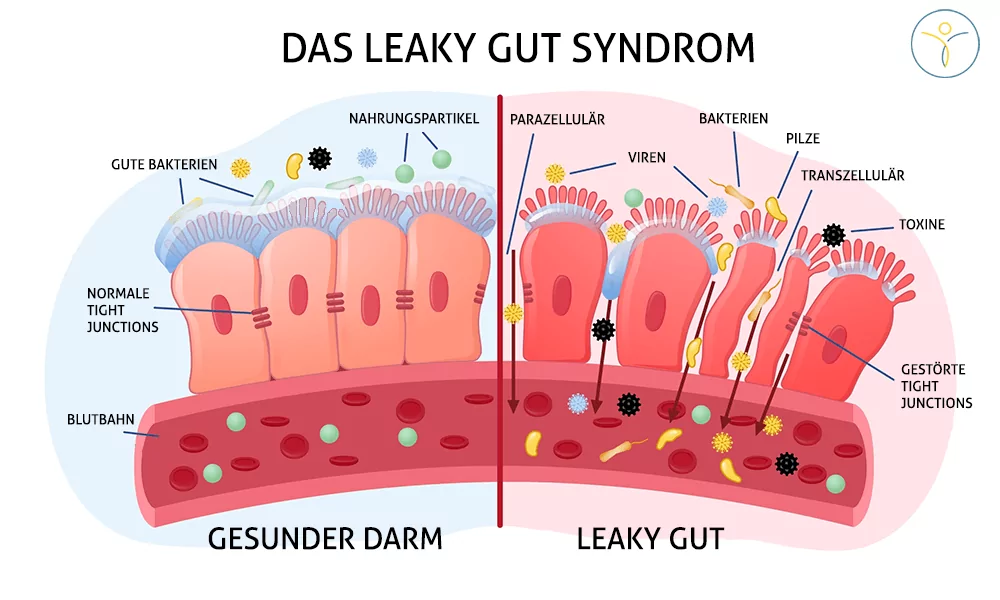APC-FUTTERKONZEPTE FÜR
Geflügel
Optimierte Nährstoffaufnahme durch verbesserte Darmschleimhaut
Die bessere Nährstoffaufnahme durch eine in der Funktion verbesserte Darmschleimhaut ist bei Geflügel von besonderer Bedeutung. Mit den APC Futterkonzept erreichen wir dies und können Protein und Mengenelemente deutlich absenken.
Damit wird die Leber geschont, gleichzeitig stärken sich Immunität und Gesundheit der Tiere, die Ammoniak-Emissionen sinken um bis zu 50 % und die Umwelt wird entlastet.
PRODUKTE
Die Futterkonzepte
01 - Küken
APC add. HM/HZ I 0,2%
Natürlich gestärkt: Fördert Darmgesundheit, Immunität und Vitalität bei Junggeflügel.

02 - Hühner
APC add. HM/HZ II 0,2%
Stärkt Darm und Stoffwechsel, verbessert die Nährstoffverwertung und unterstützt so gesunde, leistungsfähige Tiere mit stabileren Eierschalen.

Ergebnisse - Vergleich zwischen APC natural feed additive blends and Zitronensäure mit einer Kontrollgruppe bei Broilern
In einer Studie wurden APC-Naturfuttermittelzusätze und Zitronensäure bei Masthühnern im Vergleich zu einer Kontrollgruppe untersucht. Ziel war es, die Auswirkungen dieser Zusätze auf das Wachstum, den Futterverbrauch, die Futterverwertung und die Darmgesundheit der Hühner zu bewerten.
Versuchsaufbau:
480 Eintagsküken wurden in drei Gruppen aufgeteilt:
- Gruppe A erhielt 0,2% APC-Futtermittelzusätze.
- Gruppe B erhielt 2% Zitronensäure.
- Gruppe C diente als Kontrollgruppe ohne Zusätze.
Ergebnisse:
- Körpergewicht – Die höchste Gewichtszunahme wurde in Gruppe A festgestellt, gefolgt von Gruppe B. Die Kontrollgruppe C hatte das geringste Wachstum.
- Futterverzehr – Gruppe A hatte den niedrigsten Futterverzehr, während Gruppe C den höchsten aufwies.

- Futterverwertung (FCR) – Gruppe A zeigte die beste Futterverwertung, gefolgt von Gruppe B, mit der Kontrollgruppe als Schlusslicht.

- pH-Wert im Dünndarm – Gruppe A hatte den niedrigsten pH-Wert, was eine verbesserte Darmgesundheit andeutet.

- Mikroorganismen im Darm – In Gruppe A wurde die höchste Anzahl an Laktobazillen und die niedrigste Anzahl an Kolibakterien gemessen, was auf eine verbesserte mikrobielle Darmflora hinweist.

Fazit: Die natürlichen Futtermittelzusätze von APC führten zu einer besseren Wachstumsleistung und einer gesünderen Darmumgebung im Vergleich zur Zitronensäure und der Kontrollgruppe.
Diese Ergebnisse zeigen, dass APC-Zusätze vorteilhafte Effekte auf die Tiergesundheit und die Produktionsleistung haben.

Das „Leaky Gut Syndrome“ (löchriger Darm) kann durch die Verwendung von APC-Futterzusätzen verhindert werden, da diese die Gesundheit der Darmschleimhaut und die Balance der Darmflora unterstützen und so die Durchlässigkeit des Darms reduzieren.
Mehr Über Geflügel-Futterkonzepte von APC
Neben erfolgreichen Fütterungen bei Broilern erzielten wir auch bei Legehennen sehr gute Resultate: Durch die Futterzusätze von APC verbesserten sich die Persistenz und die Calciumverwertung, was zu stärkeren Schalen und weniger Brucheiern führte. Die besten Erfolge erreichten wir jedoch bei der Elterntierfütterung: kräftigere und schwerere Eier mit geringerer Bakteriendurchlässigkeit resultierten in mehr und gesünderen Küken.
Alle Infos auf einen Blick
- Stark erhöhte Konzentration der Milchsäurebakterien im Dünndarm und dadurch
- Wesentlich geringere Konzentration an Schadbakterien.
- Deutlich abgesenkter pH-Wert
- Mehr Widerstandskraft gegenüber Infektionen
- Entlastung der Leber, Leberschutz
- Bessere Futterumwandlung durch höhere Nährstoffverwertung
- Hohe Legeleistungen und schönere, stärkere Eierschalen
- Weniger Schmutzeier
- Hohe Tageszunahmen mit sehr guter Uniformität
- Bis zu 50 % Ammoniakreduktion in der Stallluft
- Weniger Ausfälle – mehr Wirtschaftlichkeit
- Geringerer Wasserverbrauch – trockenere Einstreu
- Bis zu 50% geringere Emissionen an Geruch und Schadgasen
- Weniger Stickstoff und Phosphor im Kot
- Höherer Trockenmassegehalt des Kotes
Überzeugt?
Machen Sie den ersten Schritt noch heute!
Erfahren Sie, wie unsere natürlichen Futterzusätze die Gesundheit Ihrer Tiere verbessern, die Futterkosten senken und die Nachhaltigkeit Ihrer Produktion steigern können – kontaktieren Sie uns jetzt für eine persönliche Beratung und maßgeschneiderte Lösungen!
